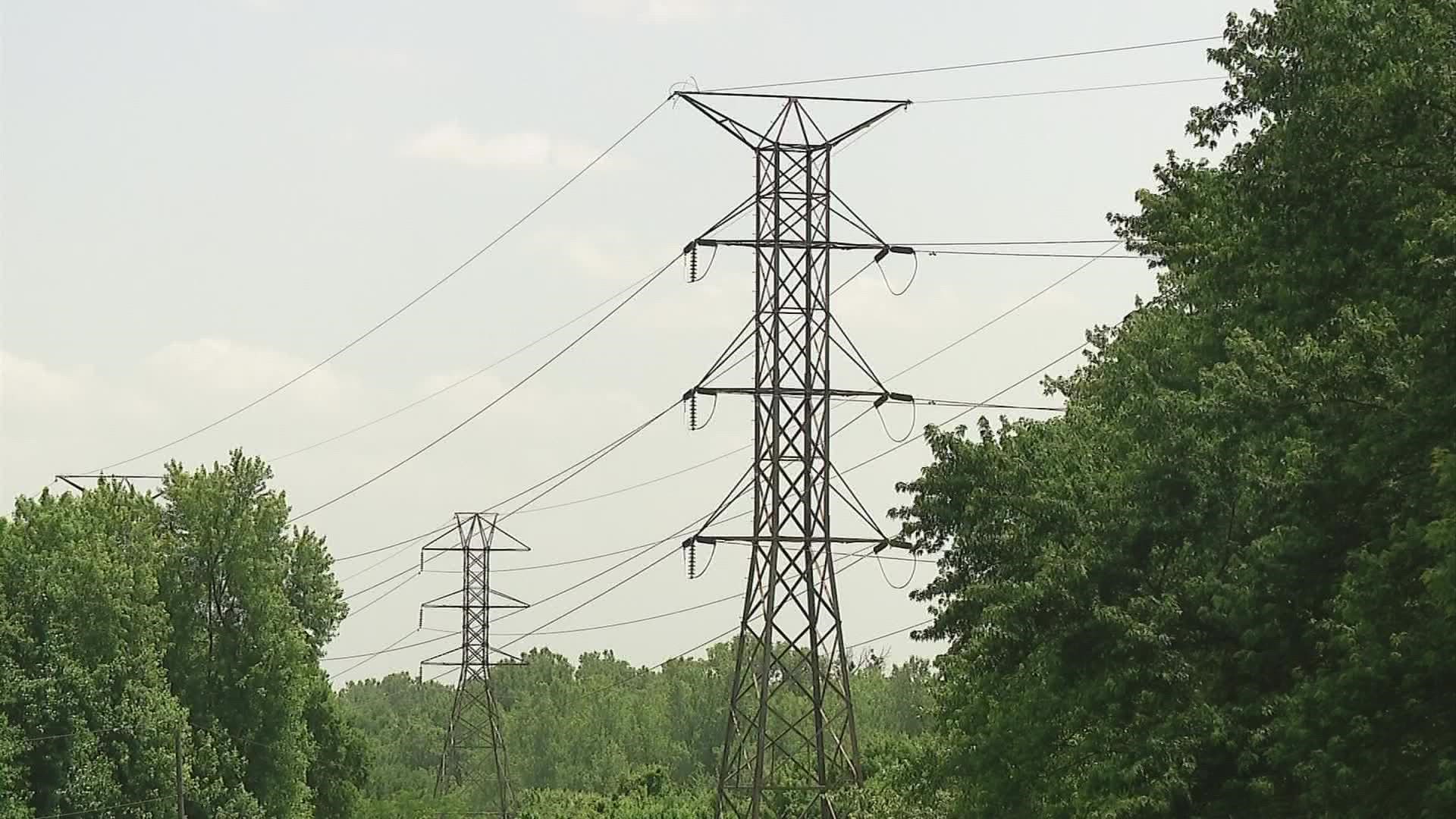COLUMBUS, Ohio — There are three energy grids in the country. There's one in the eastern part of the country and another in the western half of the US. The majority of Texas has its own smaller grid.
Here in central Ohio, we depend on AEP Ohio. AEP is served by the PJM grid which is part of the eastern region of the U.S. grid. PJM coordinates the movement of electricity across 13 states including Ohio.
Electricity comes from a generator, which can be powered in a few different ways: burning fossil fuels, collecting wind, solar, or water energy, or from nuclear reactions.
So how does it get to you?
First, it travels to transmission substations. Transformers then convert it to extremely high voltages for two reasons: it helps the electricity travel long distances and reduces the fraction of energy lost in transit.
Then, it travels through the wires overhead and underground to you.
On those power poles you see, there are what's called step-down transformers. Those convert power to lower voltages before it's distributed to your home.
"There is a concern about the rest of the summer and also the future,” said Abdollah Shafieezadeh, director of Ohio State's College of Engineering's Risk Assessment and Management of Structural and Infrastructure Systems lab.
He and his team assess critical infrastructure systems. He fears this type of situation could become common.
"Climate change is impacting the nature of hazards, either in terms of frequency or intensity of the events, some of the events that are currently unlikely, or are going to become more likely,” he said.
He says possible solutions include "hardening the system" which means upgrading grid equipment and creating "micro-grids." And, we as consumers can pay closer attention to how much energy we are using, and when.
He adds this is something that research and development alone can't fix. He says it will require the integration of resources from across different sectors, policymakers, and utilities to determine a cost-effective and long-term solution to making sure our infrastructure can keep up.

